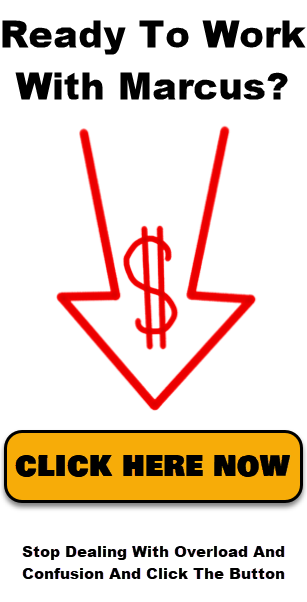Amazon Font – Why It Sells More!
Why Amazon’s Font and Simplicity Sell: The Psychology Behind the World’s Most Effective Design
When you think of Amazon, what comes to mind first? Probably the smile in its logo, the speed of Prime, or the one-click checkout.
But what most people overlook is the quiet power of its typography and simplicity — an invisible engine that drives billions in sales every year.
Amazon’s design isn’t flashy, luxurious, or even “beautiful” by traditional design standards. Yet, it works better than almost any other site on Earth.
Let’s break down why.
🧠 The Psychology of Simplicity in Sales
Before we even get into fonts, we have to understand a basic truth about consumer psychology:
People don’t buy when they’re impressed. They buy when they’re comfortable.
The human brain is lazy — it seeks the path of least resistance. In sales design, every extra thought a customer has to make adds friction.
If your site’s design, colors, or fonts make a user pause, even for half a second, you risk losing the sale.
Amazon’s design philosophy is all about reducing cognitive friction:
-
Simple fonts → easy to read, no interpretation needed
-
Plain layouts → less distraction
-
Familiar design → the user feels safe
That’s the magic: you don’t notice Amazon’s design — and that’s the point.
✍️ The Font That Quietly Prints Money: Amazon Ember
In 2016, Amazon rolled out its custom typeface: Amazon Ember.
This replaced the old Helvetica/Arial family used across the platform.
At first glance, Ember doesn’t look special. It’s a sans-serif, geometric, and neutral-looking typeface — but every curve is deliberate.
| Font Feature | Description | Psychological Impact |
|---|---|---|
| Sans-serif | No decorative strokes | Feels modern, clean, and efficient |
| Rounded edges | Soft letter curves | Feels friendly and non-threatening |
| Consistent spacing (kerning) | Even letter distribution | Improves scanning and readability |
| Medium weight | Not too thin or bold | Balanced authority and approachability |
| Optimized for screen | Clear at small sizes | Works perfectly across devices |
The result? A font that disappears — letting the product, reviews, and price do the selling.
🔍 Serif vs. Sans-Serif: Why Amazon Chose Function Over Flair
| Font Type | Example | Psychological Message | Typical Use |
|---|---|---|---|
| Serif (e.g., Times, Georgia) | Has small “feet” or strokes at ends | Trust, tradition, stability | Newspapers, banks, law firms |
| Sans-serif (e.g., Helvetica, Ember) | No decorative ends | Simplicity, clarity, modernity | Tech, e-commerce, startups |
A serif font might feel elegant or authoritative, but it also slows the reader down — which is great for reading a book, but not for making a purchase.
Amazon knows that buyers want speed and ease, not aesthetics. A sans-serif typeface signals:
-
Efficiency (you’ll get what you need fast)
-
Clarity (nothing hidden, no tricks)
-
Modern reliability (tech-forward, trustworthy)
📚 Two Fonts, Two Purposes: Ember and Bookerly
Amazon doesn’t use one font for everything.
| Context | Font | Purpose |
|---|---|---|
| Website & UI (desktop, app, product pages) | Amazon Ember | Clarity and action-oriented browsing |
| Kindle eBooks | Bookerly (serif) | Comfort and focus for long-form reading |
This dual-font approach shows a deep understanding of cognitive psychology:
-
When people are buying, they need speed and trust (sans-serif).
-
When people are reading, they need depth and calm (serif).
Amazon adapts typography to context — form follows function.
🧩 The Hidden Simplicity of Amazon’s Design System
Typography is only one layer of Amazon’s simplicity strategy. The entire interface is built on friction reduction.
| Design Element | Description | Sales Psychology Effect |
|---|---|---|
| White background | No gradients, no clutter | Neutral and product-centered |
| Consistent font hierarchy | Headline → Product Title → Price → CTA | Predictable reading flow |
| Orange CTA buttons | Warm contrast color | Emotionally energizing, guides attention |
| Minimal distractions | No pop-ups, animations, or autoplay | Reduces anxiety and decision fatigue |
| Repetition of layout | Same product page structure across millions of listings | Familiarity = trust |
Amazon’s site feels almost boring — but that’s the brilliance.
Every time you visit, it feels safe, predictable, and efficient.
🧭 The Psychology of “Invisible Design”
Here’s the paradox:
The most effective design in sales isn’t the most beautiful — it’s the least noticeable.
Psychologists call this “cognitive fluency” — the ease with which the brain processes information.
When something is easy to read and understand, people trust it more.
A famous Stanford study showed that:
-
Simple fonts (like Arial, Baskerville, Ember) made instructions feel trustworthy and achievable.
-
Decorative fonts (like Brush Script) made the same instructions feel harder and riskier.
Amazon has built its empire on this principle.
💬 The Emotional Layer: Trust and Familiarity
Amazon’s font and layout have barely changed in two decades — and that consistency creates subconscious safety.
It’s like walking into a familiar store: you know where everything is.
That’s why customers rarely analyze Amazon’s design — they just act.
Emotional associations triggered by Ember:
| Visual Cue | Emotional Response |
|---|---|
| Clean lines | Professionalism |
| Rounded edges | Warmth, friendliness |
| Balanced proportions | Stability |
| Neutral colors | Trust and objectivity |
This is the psychology of reliability — the same font you saw last time tells your brain, “You’ve been here before. It worked. You can trust it again.”
🧱 Case Study: The “Add to Cart” Button
One of the best examples of typography in sales psychology is Amazon’s Add to Cart button.
| Element | Design Choice | Psychological Purpose |
|---|---|---|
| Font: Bold Amazon Ember | Legibility and confidence | |
| Color: Bright orange | Emotional trigger for action | |
| Rounded edges: Yes | Feels safe and clickable | |
| White space: Generous padding | Easy to spot and tap | |
| Position: Consistent placement | No hesitation or scanning needed |
It’s not just a button — it’s a behavioral shortcut.
The user’s brain has been conditioned over years: see orange → buy → success.
🧮 The ROI of Design Simplicity
Simplicity isn’t just aesthetic — it’s measurable.
-
Research by Google found that visitors judge a website’s beauty in 1/50th of a second, and simple designs are consistently rated as more beautiful and trustworthy.
-
ConversionXL reports that clear typography and layout improvements can raise conversions by 20–30%.
-
Eye-tracking studies show that users spend 80% of their visual attention on product images and text — not graphics or decorative fonts.
Amazon has optimized every pixel around these insights.
⚖️ Comparing Amazon vs. Luxury Brand Typography
| Brand | Font Type | Emotion | Buying Behavior Trigger |
|---|---|---|---|
| Amazon | Sans-serif (Ember) | Efficiency, trust, accessibility | Impulse buying, quick decisions |
| Apple | Sans-serif (San Francisco) | Elegance, innovation | Brand loyalty, identity |
| Gucci | Serif (custom) | Prestige, heritage | Desire, aspiration |
| Vogue | High-contrast serif | Glamour, authority | Exclusivity, admiration |
Amazon’s goal is not aspiration — it’s functionality at scale.
Where Gucci’s font says, “This is special,” Amazon’s says, “This just works.”
🧩 Why Simple Fonts Sell More
Here’s the sales psychology principle that ties it all together:
The easier it is to read, the easier it is to trust. The easier it is to trust, the easier it is to buy.
Amazon’s typography is frictionless, familiar, and humanized — a quiet reminder that sometimes, clarity converts better than creativity.
🚀 Key Takeaways
| Insight | Why It Matters |
|---|---|
| Amazon uses Amazon Ember, a neutral sans-serif font | Feels modern, clean, and efficient |
| Simplicity builds cognitive fluency | People trust what they understand instantly |
| Consistent typography = brand reliability | Familiar design lowers buyer hesitation |
| Ember’s rounded design adds approachability | Balances corporate power with friendliness |
| Simple fonts outperform fancy ones in conversion tests | Clear = credible = clickable |
🧭 Final Thoughts
Amazon’s font and design strategy prove a profound truth in sales psychology:
The most profitable design isn’t loud — it’s invisible.
By using a neutral, friendly, highly readable font like Amazon Ember, and pairing it with a ruthlessly simple layout, Amazon removes every barrier between thought and purchase.
It’s not “beautiful” in the artistic sense — but it’s beautiful in its results.
Each word, pixel, and curve is engineered for one thing: trust that converts.

